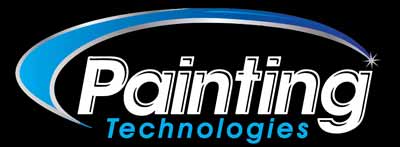Industrial floor striping is a critical aspect of workplace safety and efficiency. It involves marking designated areas for specific functions, such as pedestrian walkways, machine storage, emergency exits, and loading zones, among others. When properly done, industrial floor striping improves traffic flow, reduces the risk of accidents, and promotes better organization and productivity. This article will discuss the importance of industrial floor striping and provide tips on how to do it effectively.
Why is industrial floor striping important?
Safety
Industrial workplaces are often bustling with activity, with workers, machinery, and vehicles moving around. The lack of clear demarcation can result in accidents, such as slip-and-fall incidents or collisions. By marking designated areas, workers can easily navigate around the workspace, and drivers can identify loading and unloading areas. This minimizes the risk of accidents, thus creating a safer work environment.
Efficiency
Industrial floor striping can help streamline operations by organizing the workspace. When everything is in its designated area, workers can quickly find the tools and equipment they need, and machines can be easily located for repairs and maintenance. This saves time and reduces downtime, ultimately increasing productivity.
Compliance
Many industrial facilities are subject to safety regulations and standards set by government agencies or industry organizations. Industrial floor striping helps facilities maintain compliance with these regulations by clearly indicating areas such as fire lanes, loading docks, and designated storage areas.
Visual Management
Floor striping can be used as a visual management tool to convey important information, such as inventory locations, production flow, or quality control checkpoints. This visual communication enhances communication among employees and supports lean manufacturing principles by promoting efficiency and waste reduction.
Aesthetics
Beyond its functional benefits, well-executed floor striping can enhance the overall appearance of a facility. Crisp, clean lines and vibrant colors contribute to a more organized and professional-looking workspace, which can positively impact employee morale and customer impressions.
Overall, industrial floor striping plays a crucial role in maintaining a safe, organized, and efficient work environment, making it an essential investment for industrial facilities.
Tips for effective industrial floor striping
Plan ahead
Before starting, it is essential to create a detailed plan that outlines the areas to be marked and the colors to be used. This will ensure consistency and clarity throughout the workspace. It is also crucial to involve workers in the planning process to get their input and feedback.
Choose the right paint
The type of paint used is crucial for the longevity of the markings. Industrial floor striping paints are specially designed for high-traffic areas, and they come in different formulations, such as epoxy, urethane, and acrylic. Consider the type of surface to be marked and the environmental conditions, such as temperature and humidity, before choosing the paint.
Prepare the surface
Proper surface preparation is key to achieving a lasting and high-quality finish. Clean the surface thoroughly and remove any debris, dirt, or grease. If the surface is uneven, consider using a concrete grinder to level it out.
Use the right tools
Industrial floor striping requires specialized tools, such as striping machines, stencils, and masking tape. These tools help ensure the accuracy and consistency of the markings.
Follow safety protocol
Industrial floor striping can be hazardous if proper safety protocols are not followed. Ensure that workers are wearing personal protective equipment (PPE), such as safety goggles, gloves, and respirators, and that the work area is adequately ventilated.
In conclusion, industrial floor striping is a critical aspect of workplace safety and efficiency. By marking designated areas, workers can navigate the workspace safely and efficiently, reducing the risk of accidents and increasing productivity. When planning and executing industrial floor striping, it is crucial to consider factors such as safety, compliance, and the type of paint and tools used. By following these tips, industrial workplaces can achieve a lasting and high-quality finish that promotes safety and productivity.

